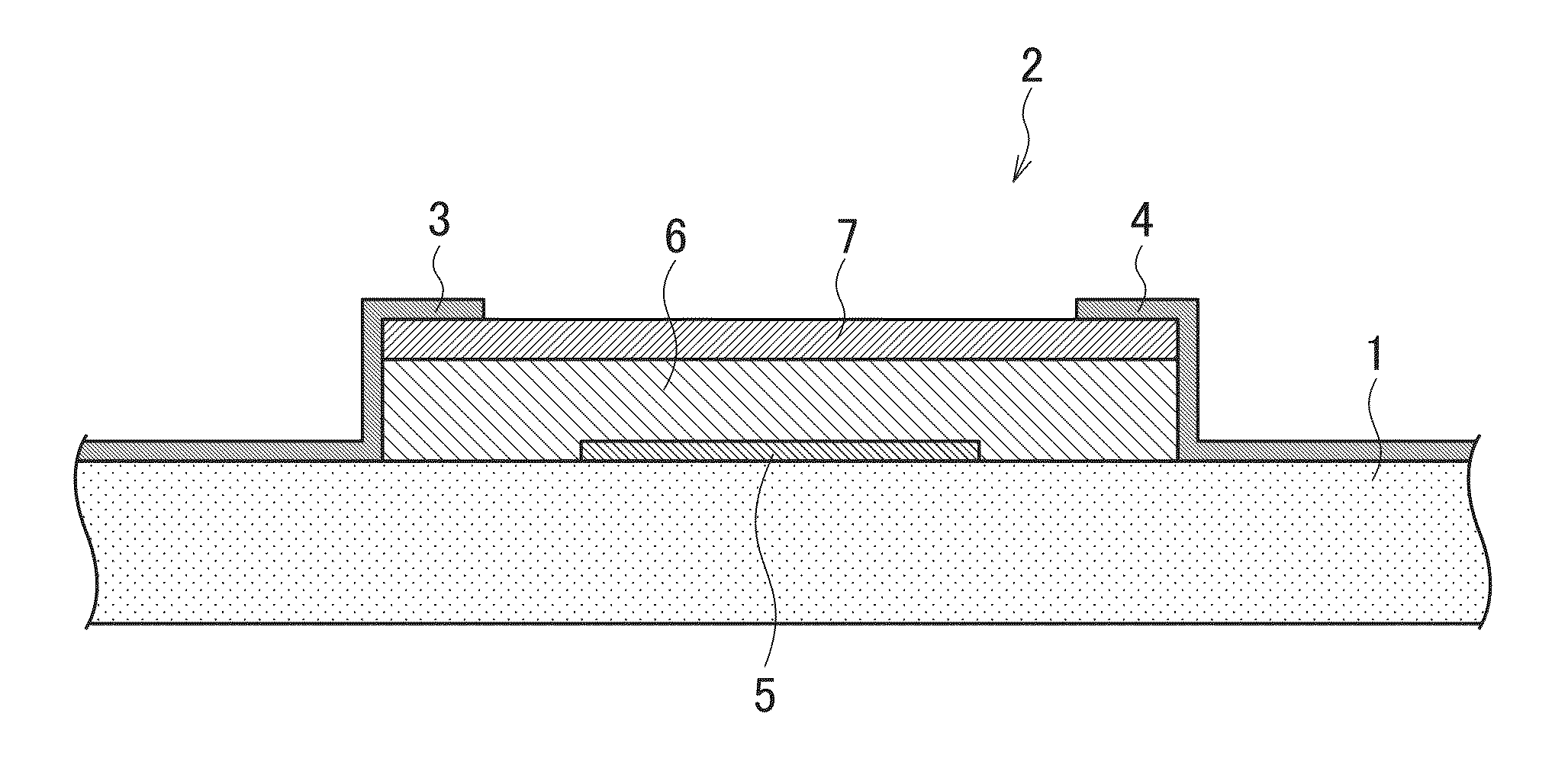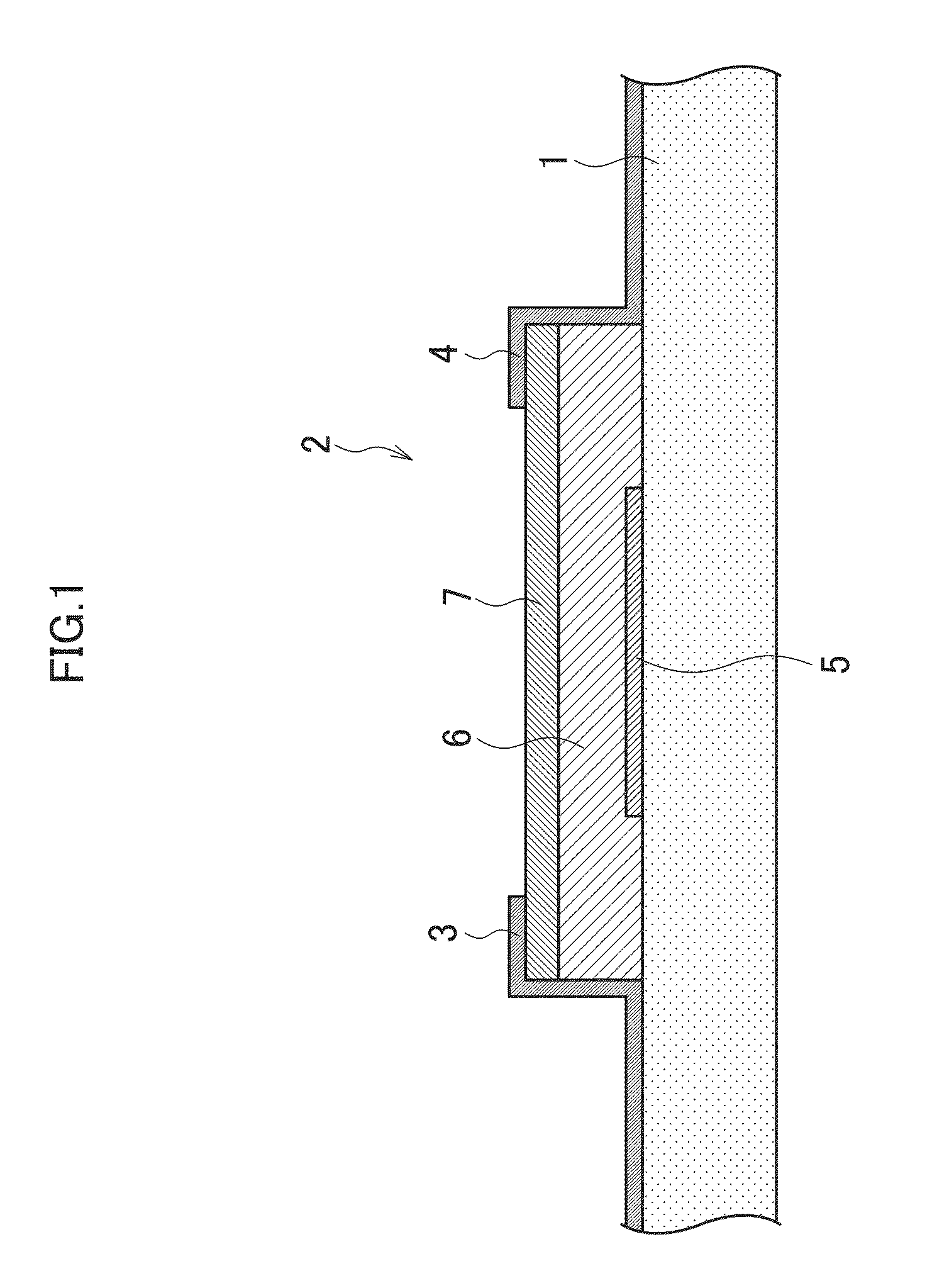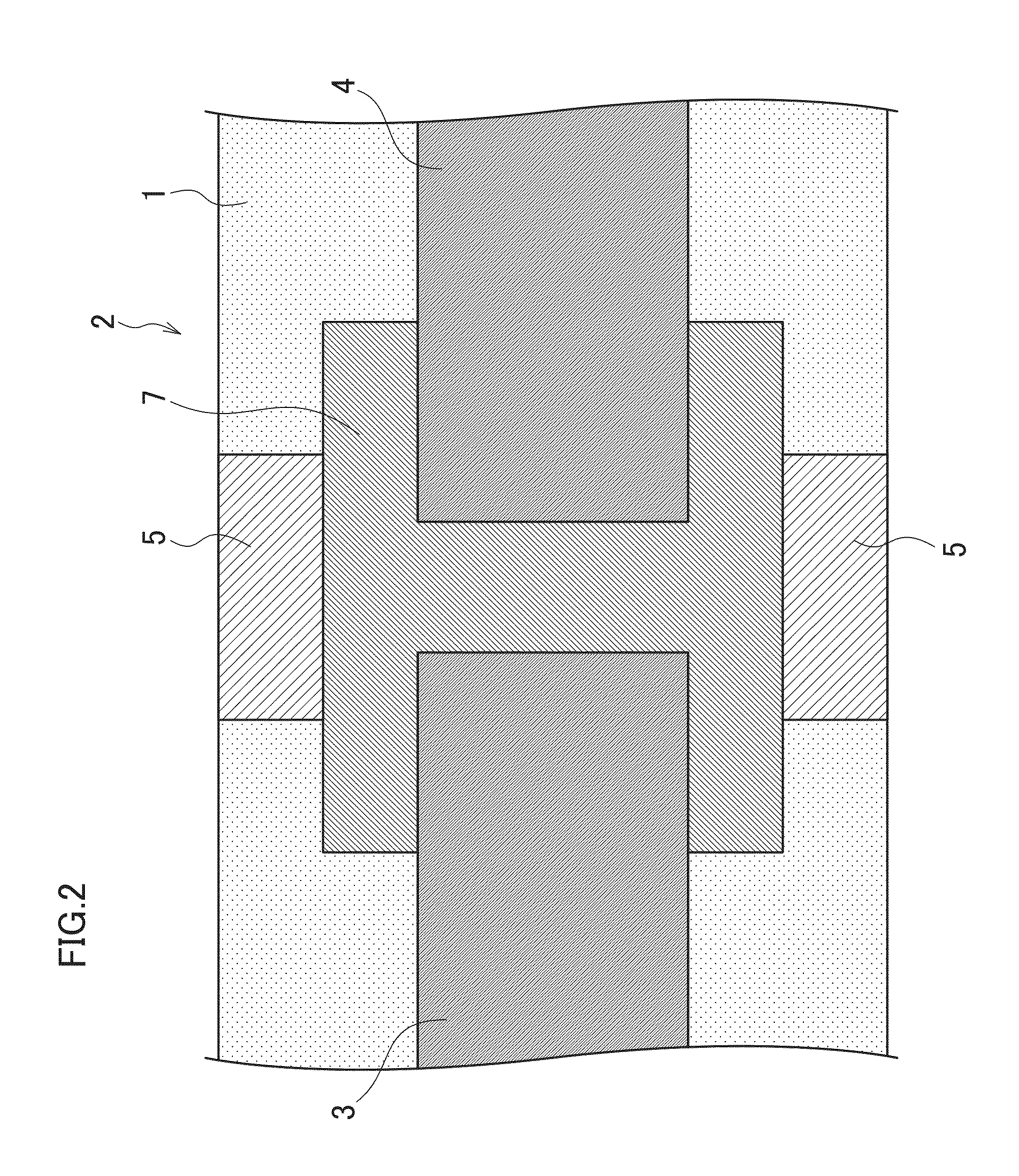Conductive pattern forming method and conductive pattern forming system
a technology of conductive polymer and conductive pattern, which is applied in the direction of superimposed coating process, liquid/solution decomposition chemical coating, resistive material coating, etc., can solve the problems of low electrical conductivity (conductivity), performance (adhesion) with resin substrate and flexibility, and electrical performance becomes an issue, so as to increase the content ratio of metal microparticles, the effect of favorable electrical performan
- Summary
- Abstract
- Description
- Claims
- Application Information
AI Technical Summary
Benefits of technology
Problems solved by technology
Method used
Image
Examples
first embodiment
Overview of Conductive Pattern Forming Method (System)
[0048]FIG. 1 is an explanatory diagram of a conductive pattern forming method (system) according to a first embodiment of the present invention and is a sectional view showing a schematic structure of electrical wirings (electrodes or electrode wirings) 3, 4, and 5 of an organic TFT (Thin Film Transistor) 2 formed on a flexible film (flexible base material) 1.
[0049]In the first embodiment described below, a description will be given on conductive pattern formation according to an ink-mixing method in which a conductive polymer and metal nanoparticles are mixed in advance at a predetermined content ratio and a plurality of functional fluids with different content ratios of the conductive polymer and the metal nanoparticles are used.
[0050]Note that in the present specification, the “flexible film 1” and the “organic TFT 2” may also be collectively referred to as a “base material” without distinction between the “flexible film 1” an...
second embodiment
[0231]Next, a conductive pattern forming method (system) according to a second embodiment of the present invention will be described.
[0232](Description of Conductive Pattern Forming System (Device))
[0233]FIG. 17 is a general configuration diagram of a conductive pattern forming system according to the second embodiment of the present invention. Moreover, in FIG. 17, portions that are same as or similar to those in FIG. 4 are denoted by same reference numerals and descriptions thereof will be omitted.
[0234]A pattern forming system 110 shown in FIG. 17 includes an ink-jet head 50-11 that discharges a functional fluid containing a conductive polymer (a conductive polymer fluid) and an ink-jet head 50-12 that discharges a functional fluid containing metal nanoparticles (a metal nanoparticle fluid) in place of the ink-jet heads 50-1, 50-2, 50-3, 50-4, and 50-5 which discharge functional fluids of the conductive pattern forming system 10 illustrated in FIG. 4.
[0235]A draw-mixing method is...
specific application examples
[0296]Next, application examples of a wiring structure formed using the conductive pattern forming method (system) presented above will be described. FIG. 22 is a sectional perspective view of a touch panel 200 formed using the conductive pattern forming method described above.
[0297]For the touch panel 200 shown in FIG. 22, colorless and transparent indium tin oxide (ITO) is used as a material of metal nanoparticles. In other words, the conductive pattern forming method shown in the present example is applied to a transparent electrode film 204 of an upper conductive layer 202 and a transparent electrode film 208 of a lower electrode layer 206.
[0298]A member denoted by reference numeral 210 is a front panel and a member denoted by reference numeral 212 is a base substrate. A detailed description of a structure and a description of functions of the touch panel 200 will be omitted.
[0299]According to the conductive pattern forming method and the conductive pattern forming system config...
PUM
| Property | Measurement | Unit |
|---|---|---|
| boiling point | aaaaa | aaaaa |
| boiling point | aaaaa | aaaaa |
| boiling point | aaaaa | aaaaa |
Abstract
Description
Claims
Application Information
 Login to View More
Login to View More - R&D
- Intellectual Property
- Life Sciences
- Materials
- Tech Scout
- Unparalleled Data Quality
- Higher Quality Content
- 60% Fewer Hallucinations
Browse by: Latest US Patents, China's latest patents, Technical Efficacy Thesaurus, Application Domain, Technology Topic, Popular Technical Reports.
© 2025 PatSnap. All rights reserved.Legal|Privacy policy|Modern Slavery Act Transparency Statement|Sitemap|About US| Contact US: help@patsnap.com



